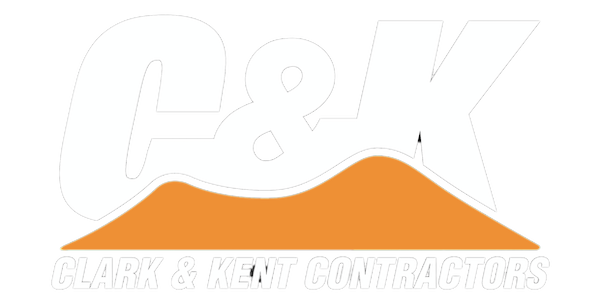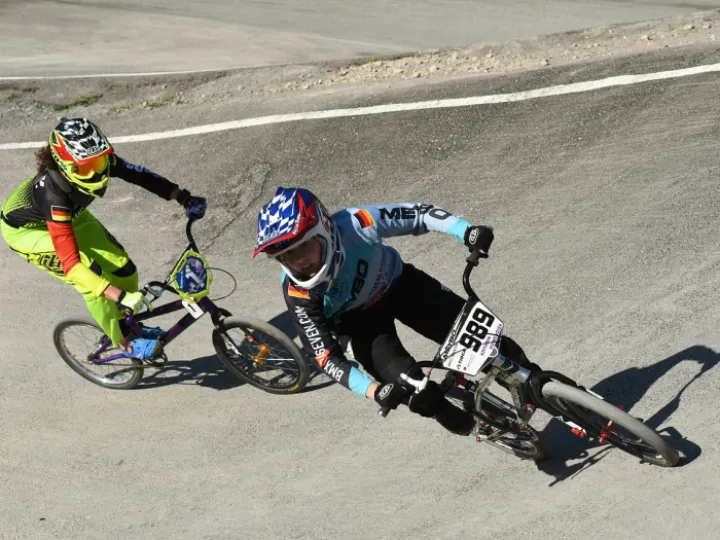Get on your BMX bike
BMX biking is one of the fastest-growing sports in the UK, offering a massive range of sporting opportunities for enthusiasts of all ages.
BMX racing got a big boost at the Olympic Games in Beijing and an even more significant increase in Britain when it featured at London 2012 on a world-class BMX track built by Clark & Kent Contractors.
Since then, BMX racetracks have sprung up everywhere, ranging from simple beginner pump tracks to international supercross stadia.
An offshoot of dirt trail racing in California, BMX racing gained popularity first across America in the 1980s and then spread to the rest of the world in subsequent years.
Championship BMX races were regular events. Still, it wasn't until the Swiss-based Union Cycliste Internationale (UCI) standardised rules and regulations in the 1990s that it became an internationally recognised sport.
Now, BMX race events are held on tracks across the country, many built to national and international standards, with regulation start ramps, banked corners, jumps, straights, and rhythm sections.
Tracks for beginners
Youngsters across Britain are taking up BMX racing, thanks to coaching facilities at many tracks for riders of all ages and abilities.
Many start on a simple pump track, learning the basics of pump action, which is vital in conditions where racers rarely have time to pedal.
BMX racing skills are first picked up in local parks or backyards, then honed at local BMX clubs and tracks until enthusiasts are ready to compete.
The highest-ranking BMX racers are highly trained athletes with superb sprinting ability, bike control, and an extraordinary passion for the sport.
Building racetracks
Clark & Kent Contractors are world-renowned for their BMX track-building skills, having built scores of tracks in the UK and abroad.
Track-building experts at Clark & Kent will tell you that no two tracks are the same, but as riders themselves, they know a thing or two about BMX tracks.
They have even helped draw up the UCI guidance on BMX track design – rules that are now adopted worldwide.
Even simple dirt back garden pump tracks can be exciting to ride and offer a test of skill and ability. But purpose-built tracks are where most riders develop their skills.
Club and county BMX tracks are usually 350 to 400 metres long and can accommodate eight riders at a time, with elevated start ramps and various bermed corners, hills, and jumps that demand high speeds and nerves of steel.
BMX racing events
Eventually, riders progress to race meetings where they can test their skills against other riders. Sessions can be fast-paced, all-action days that have both riders and spectators in thrall.
Events usually begin with qualifying heats, known as 'motos'. The fastest in qualifying get the best starting positions for the next race, and riders can progress through knockout rounds to reach the finals.
As races only last for a minute or two and follow each other in quick succession, the pace is often fast and furious.
The UK has several regional racing leagues that accept riders from across the country. Race events are held throughout the year and are often family-friendly, with compact tracks that promote a family atmosphere.
Some events are time trials, in which riders compete individually against the clock. Time trials can rank riders before the primary race, or they may be races in their own right, with the fastest rider taking the cup.
Those who progress to competitive BMX racing will need a full race licence to win points in any regional or national ranking competitions.
British Cycling governs all aspects of cycling in the United Kingdom, including BMX under UCI rules.
BMX racing kit
The first requirement is a BMX bike with a sturdy but light frame, a single gear, and a single rear brake. Standard-sized bikes have 20- to 24-inch wheels, while mini versions are available for younger riders.
Entry-level bikes are relatively inexpensive, but pro riders often use more expensive models, often made from exotic materials and featuring precision parts.
Full-face helmets are mandatory for BMX racing because crashes can be frequent, even during training. Gloves, knee and elbow pads, and thick jerseys or coats are recommended to provide all-around protection.
Riders can purchase jackets, trousers, goggles, boots, vests, belts, or socks to complete their outfit.
More on bike training
For help with your BMX project, talk to Clark & Kent , specialist builders of BMX tracks and skateparks.
Contact Us
OFFICE
01630 672329
office@clarkkentcontractors.com
Endorsements


